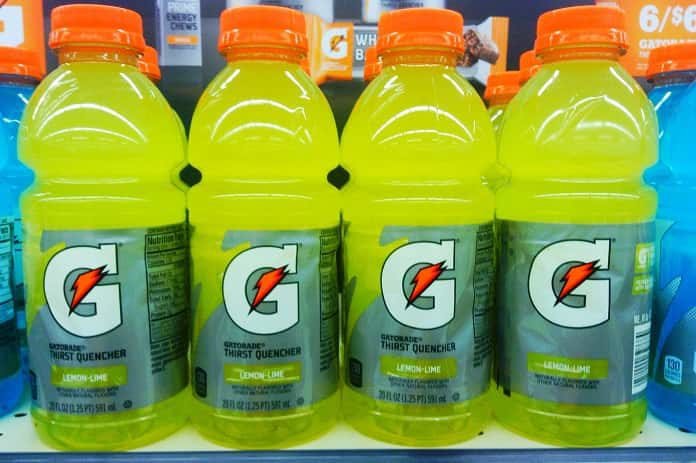Sports drinks have high sugar content and can be detrimental to the health of teenagers.
Researchers recently studied the consumption of sports drinks among children and teenagers in the United States.
Sports drinks are advertised to restore energy and fluids during and after strenuous exercise by providing electrolytes and carbohydrates, but …
Are sports drinks healthy?
These drinks may meet the needs of elite athletes involved in prolonged, high-intensity activities that result in a loss of electrolytes and require hydration.
However, the average child does not lose electrolytes at the same rate as elite athletes and does not participate in the level of physical activity that requires electrolyte replenishment.
Despite this, sports drinks are heavily marketed to children and youth.
High sugar content in sports drinks
Sports drinks are very high in sugar and add unnecessary calories to children’s diets.
The consumption of these drinks and other sugar-sweetened beverages is associated with weight gain, dental erosion, obesity, poor nutrition, and type 2 diabetes.
In the US, sugar-sweetened beverage consumption has decreased since 2000 due to many schools banning soda.
However, the consumption of sports drinks has increased, as many schools have replaced soda with sports drinks that have sugar content comparable to soda.
A study to assess recent changes in sports drink consumption
In a study published in Pediatrics, authors studied data from US high schools to assess recent changes in sports drink consumption over five years.
Data regarding sociodemographic and lifestyle factors
The authors also aimed to generate data regarding sociodemographic and lifestyle factors associated with sports drink consumption in teenagers.
From 2010 to 2015, there was a significant, but small increase in teenagers who consumed at least one sports drink in the last seven days, likely due to recent bans on soda in schools.
Vending machines with sports drinks in schools increased the number of servings students consumed per week.
Although the proportion of students who consume sports drinks per week increased slightly, the proportion of students consuming these drinks daily decreased.
This was observed across all demographic and lifestyle categories, especially in African-American teenagers and teenagers who are overweight.
Children and teenagers do not need electrolyte replenishment from sports drinks
Sports drink consumption is more prevalent in teenagers who are more athletic or more active despite the AAP’s Committee on Nutrition and Council on Sports Medicine and Fitness recommendation that children and teenagers do not require the electrolyte and carbohydrate replenishment provided by sports drinks.
Marketing for sports drinks continues to be successful in targeting children and teenagers regardless of their nutritional needs.
Boys consume more than double sports drinks than girls, even after correcting for factors such as physical activity and TV watching.
The reason for this is unclear.
Further, teenagers who watch more TV, in general, consume more sports drinks, even when physical activity level and other factors are controlled for, likely due to aggressive sports drink advertising campaigns that do not educate on the levels and types of physical activities where sports drinks may be beneficial.
Water continues to be the best choice for hydration
Sports drinks are often presumed to be healthy and are associated with elite athletes.
Further, sports drinks are aggressively marketed toward teenagers, making them a popular choice among high school students.
From 2010 to 2015, there was a slight increase in the proportion of high school students in the US who consume sports drinks in a week, but the number of servings being consumed per week by students has decreased.
Perhaps students recognize that sugary drinks should only be consumed occasionally and should not be a daily beverage choice, as sugary drinks are associated with many health issues.
The AAP continues to recommend water as the best choice for hydration, and children and teenagers generally do not require electrolyte supplementation.
Written by Mallory Wiggans
Reference: Cordrey, K., Keim, A., Milanaik, R. & Adresman, A. (2018). Adolescent consumption of sports drinks, Pediatrics, 141, 6.



